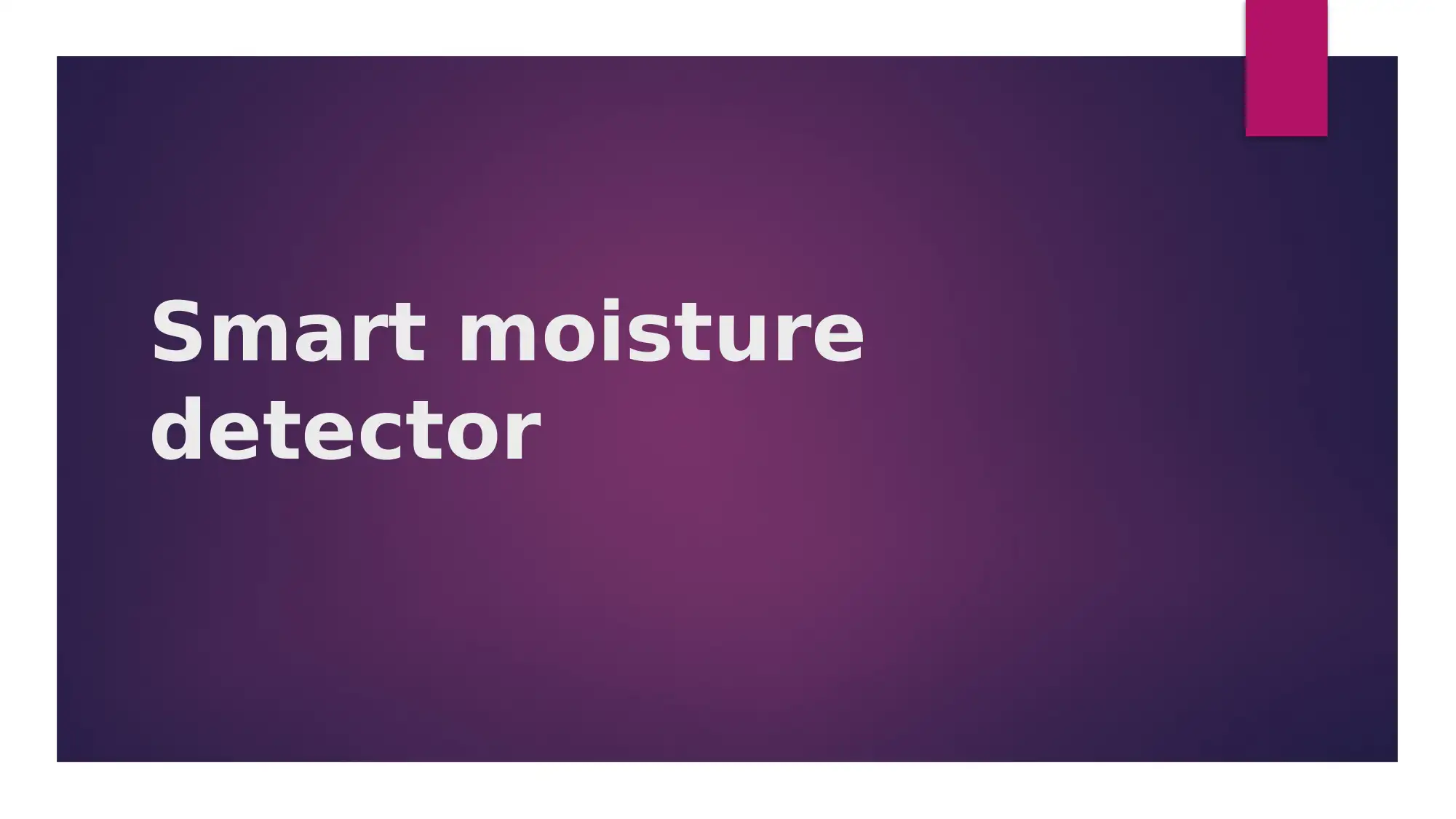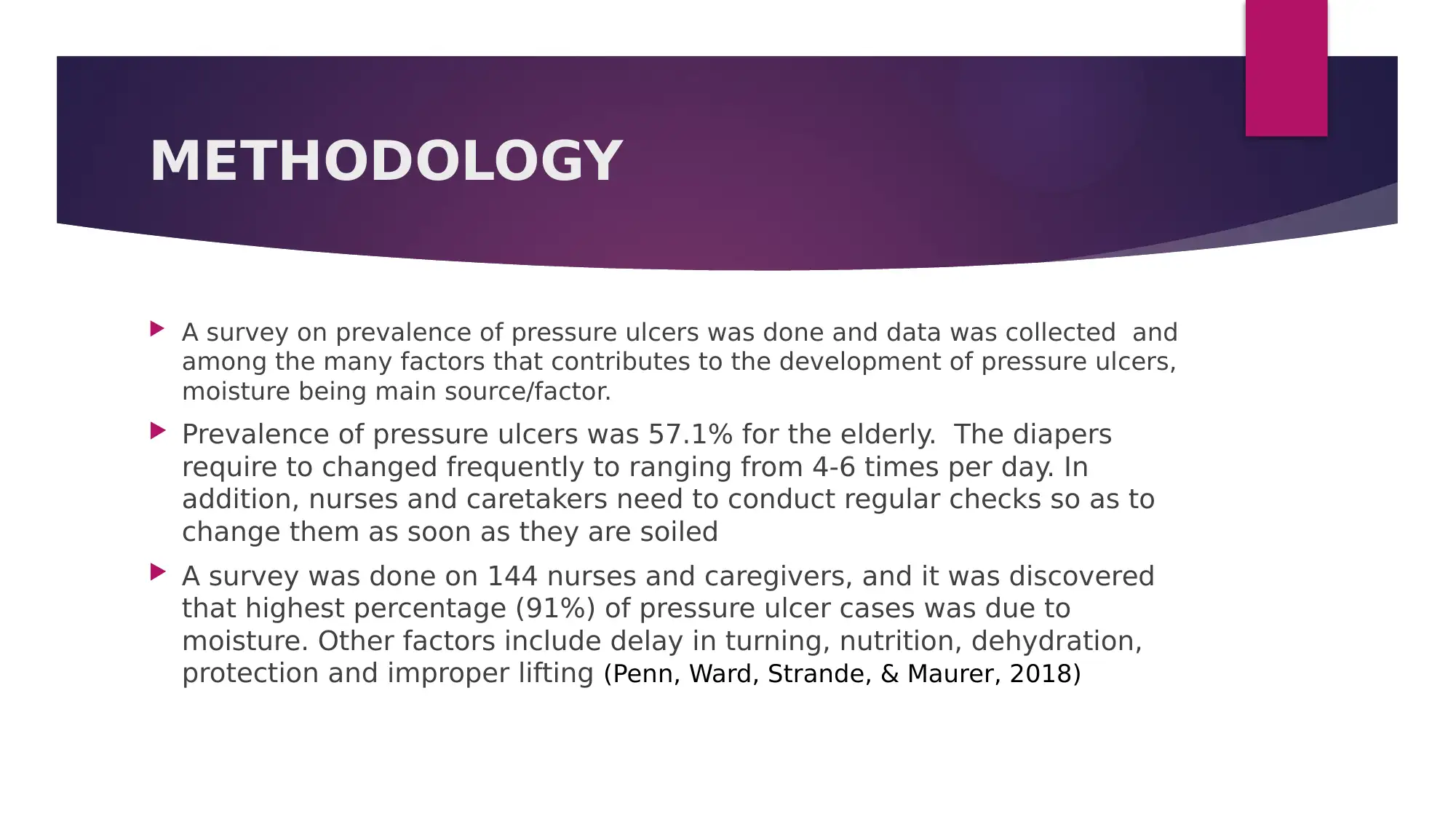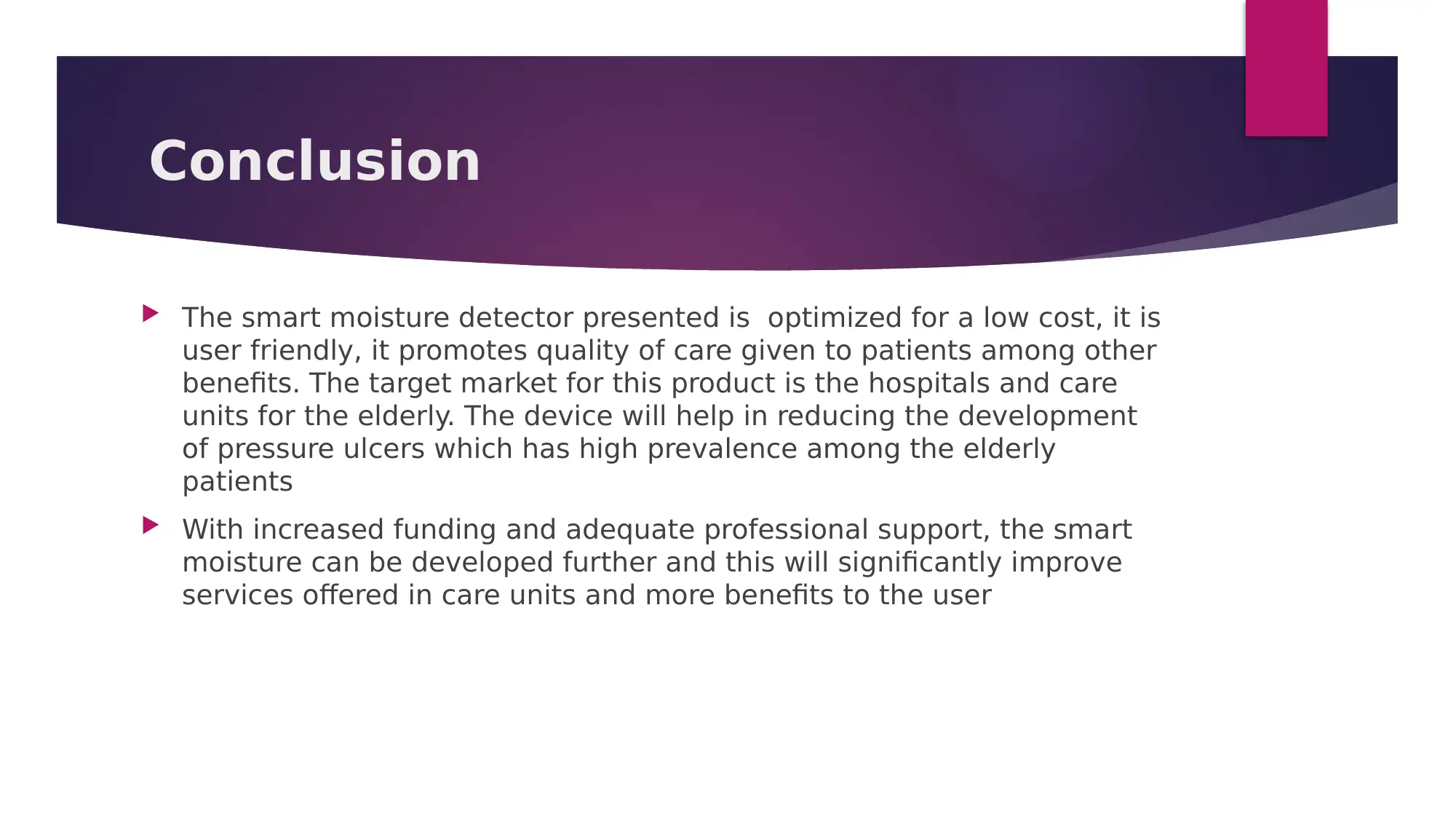NR1799 Project: Smart Moisture Detector for Pressure Ulcer Prevention
VerifiedAdded on 2022/08/23
|10
|889
|20
Project
AI Summary
This project details the development of a smart moisture detector designed to reduce the incidence of pressure ulcers in bedridden elderly patients. The device aims to alert caregivers to changes in diaper moisture levels, thereby improving patient quality of life and reducing the workload of nurses. The methodology involves a survey of nurses and caregivers, revealing moisture as a primary contributor to pressure ulcers. The device incorporates Microbits, a buzzer, and LED lights to detect and signal moisture. The prototype was tested with participants, who expressed interest in purchasing the device. Benefits include increased efficiency for caregivers, improved patient comfort, and reduced risk of infection. The project highlights the device's potential to improve healthcare outcomes in care units and hospitals, ultimately reducing the prevalence of pressure ulcers among the elderly, with a focus on user-friendliness and cost-effectiveness. The report also includes references to relevant research on pressure ulcers and related factors.
1 out of 10












![[object Object]](/_next/static/media/star-bottom.7253800d.svg)